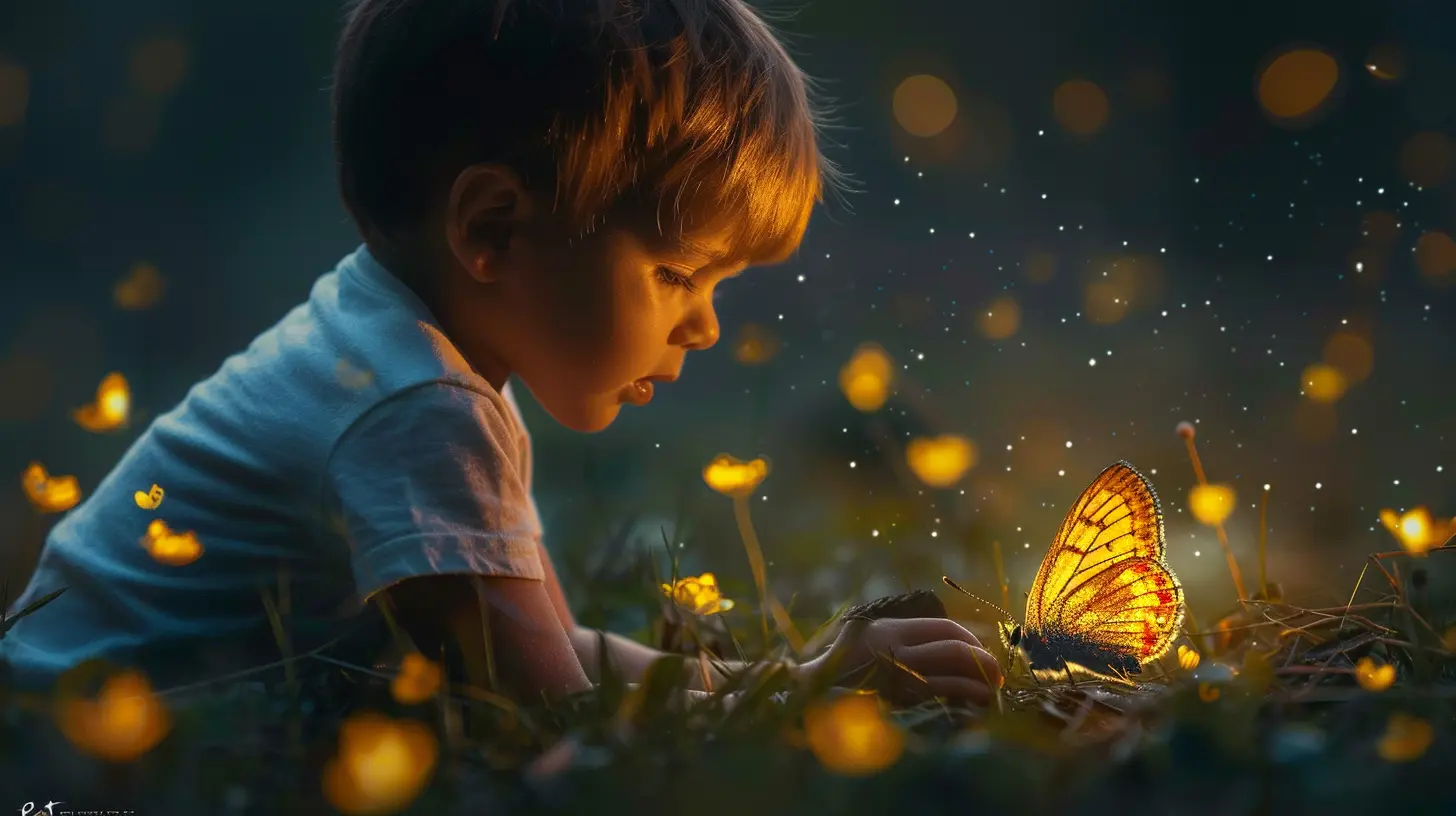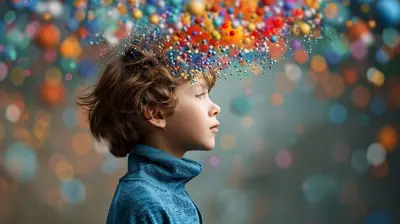Nurturing a Child's Sense of Wonder and Discovery
11 September 2025
Have you ever watched a child marvel at something as simple as a butterfly fluttering past or the magic of bubbles floating through the air? Their eyes widen. Their mouths drop open slightly. It's pure wonder—the kind that as adults, we sometimes forget exists. But that innate curiosity? That’s gold.
In this article, we’re diving deep into how we, as parents, caregivers, teachers, or even just cool aunts and uncles, can nurture a child’s sense of wonder and curiosity about the world. Not just for the sake of fun (although that’s a big part of it), but because that spark of discovery sets the foundation for powerful, lifelong learning and creativity.
Let’s talk about how we can keep their imaginations alive and kicking in this busy, tech-crazy world.
Why is Wonder So Important in Childhood?
Before we get into the how, let’s talk about the why. Why does wonder matter so much?When children are filled with wonder, they aren’t just being cute—they’re learning. That wide-eyed amazement is essentially their brain saying, “Wait, tell me more about this!” Wonder fuels curiosity, and curiosity fuels questioning, exploring, experimenting—basically, all the essentials of learning.
Plus, wonder helps kids:
- Develop problem-solving skills
- Think creatively
- Be more empathetic and aware
- Stay motivated and engaged in learning
Think of wonder as the spark that lights the fire of imagination.
The Modern Wonder Crisis: Are Screens Stealing the Magic?
Let’s be real—kids today are surrounded by screens. From tablets and smart TVs to interactive learning apps, they're swimming in digital content. While some of it can be educational, it can also drown out their natural curiosity.Why? Because passive entertainment is the opposite of discovery. When everything is immediately available at the swipe of a finger, there's little need to ask questions or figure things out.
So, does that mean we toss all devices out the window? Nope. But we do need to make room for real-world wonder.
10 Ways to Nurture a Child’s Sense of Wonder and Discovery
Let’s roll up our sleeves. Here's how you can nurture that magical sense of wonder in a child—from toddlers to teens.1. Encourage Questions (Even When They're Endless)
You know those moments when your kid asks “Why?” for the 112th time in a row? Take a breath and answer. Then say, “Hmm, what do you think?”Their questions are signs of curiosity, and your patience lets them know it's okay to ask. When we shut questions down, we close the door to discovery.
Pro Tip: Keep a “Question Jar” at home—any time they ask something big or fascinating (like “Why is the sky blue?”), write it down. Pick a time each week to explore the answers together.
2. Let Them Get Bored (Yes, Really)
It sounds weird, but boredom is actually a gateway to creativity. When kids have nothing to do, they have to create something to fill that space—stories, inventions, games, or maybe just daydreaming.Fight the urge to fill every moment with structured activities. Give them “unplugged” time and see what magic unfolds.
3. Go Outside (Even When the Couch Feels Comfier)
Nature is one of the greatest wonder-generating machines we’ve got. A simple walk through the woods or even a local park can lead to amazing discoveries—bugs under rocks, animal tracks, funny-shaped clouds.Let them touch, smell, squish, and climb (safely, of course). The real world is messy, unpredictable, and wildly more interesting than any app.
4. Read—But Not Just Any Books
Books open up entire galaxies of wonder. Choose stories that stretch the imagination—magical fantasies, spirited adventures, or even non-fiction books about space, deep-sea creatures, or ancient civilizations.Pro Tip: Read aloud together, even if your child can already read solo. Shared reading sparks questions and deeper discussions.
5. Follow Their Interests (Even If It’s Dinosaurs for the 50th Time)
Obsessions are a child’s way of diving deep. If they're into dinosaurs, build a cardboard museum at home. If it's space? Make a rocket ship out of pillows. When we engage with their interests, we’re saying, “Your curiosity matters.”You don’t need to be an expert—just be curious with them.
6. Let Them Lead the Way
Child-led play or learning is a game-changer. Instead of always directing the activities, ask, “What would you like to do today?” or “How would you solve that?”Giving them the reins boosts confidence and shows them they’re capable of creating their own experiences.
7. Celebrate “Failures” as Part of the Discovery Process
When kids try something and it doesn’t work, that’s not a failure—it’s science! Encourage experimentation, and when things flop, say things like, “Wow, now we know what doesn’t work! What’s next?”This builds resilience, curiosity, and the courage to keep trying.
8. Create a Wonder-Filled Environment
Fill your home or classroom with little sparks of wonder:- A microscope or magnifying glass on a table
- A bin of random art supplies
- A plant growing in a jar
- Photos of space, ancient ruins, or animals
Keep their environment rich with little nudges toward curiosity.
9. Take Field Trips—Big and Small
You don’t have to go to Disneyland to spark imagination. Visit a planetarium, a local farm, a science center, or even the post office (seriously, the conveyor belts are pretty cool).Exposing kids to different places shows them how big and interesting the world really is.
10. Be Wonder-Full Yourself
Lost your own spark of wonder? It happens to the best of us.But here’s the thing: Kids mirror our emotions and behaviors. When you get excited about something, they absorb that like a sponge. Be amazed by the little things. Ask questions out loud. Say “Wow!” a lot.
Basically, lead by example—and let them see that grown-ups can still be filled with awe, too.
Wonder in the Everyday: It's Closer Than You Think
You don’t need a vacation or fancy equipment to inspire discovery. Wonder lives in ordinary things, like:- Noticing how ice melts into a puddle
- Watching ants carry food (like Olympic champions)
- Listening to wind rustle through trees
- Making shadow puppets on the wall
When kids (and adults) start noticing the extraordinary in the ordinary, everything becomes a chance to learn.
The Role of Emotions in Curiosity and Wonder
Let’s dip into a bit of psychology here—emotions play a huge role in how kids engage with the world.Positive emotions like joy, surprise, and awe open up the brain to absorb new information. When kids are emotionally engaged, they retain more and feel more connected to their environment. That’s why creating emotionally rich, safe, and fun environments is crucial.
Laugh with them. Be silly. Let them get messy. All of it strengthens their sense of emotional safety—and that safety gives wonder room to grow.
Final Thoughts: Keep the Spark Alive
At the end of the day, nurturing a child’s sense of wonder isn’t hard—it’s about slowing down, tuning into their world, and making space for curiosity to lead the way. It’s about saying, “I see you. I hear your questions. Let’s figure this out together.”So the next time your kid stops to stare at a snail or asks why the moon follows the car, pause. Smile. And lean into the moment. It’s not just a question—it’s an invitation to share in the magic of early discovery.
And honestly? That’s a pretty beautiful thing.
all images in this post were generated using AI tools
Category:
Child DevelopmentAuthor:

Paulina Sanders
Discussion
rate this article
1 comments
Primrose Taylor
Encouraging curiosity fosters lifelong learning and joy.
October 7, 2025 at 5:05 AM

Paulina Sanders
Absolutely! Fostering curiosity not only sparks joy but also lays the foundation for continuous learning throughout life.


